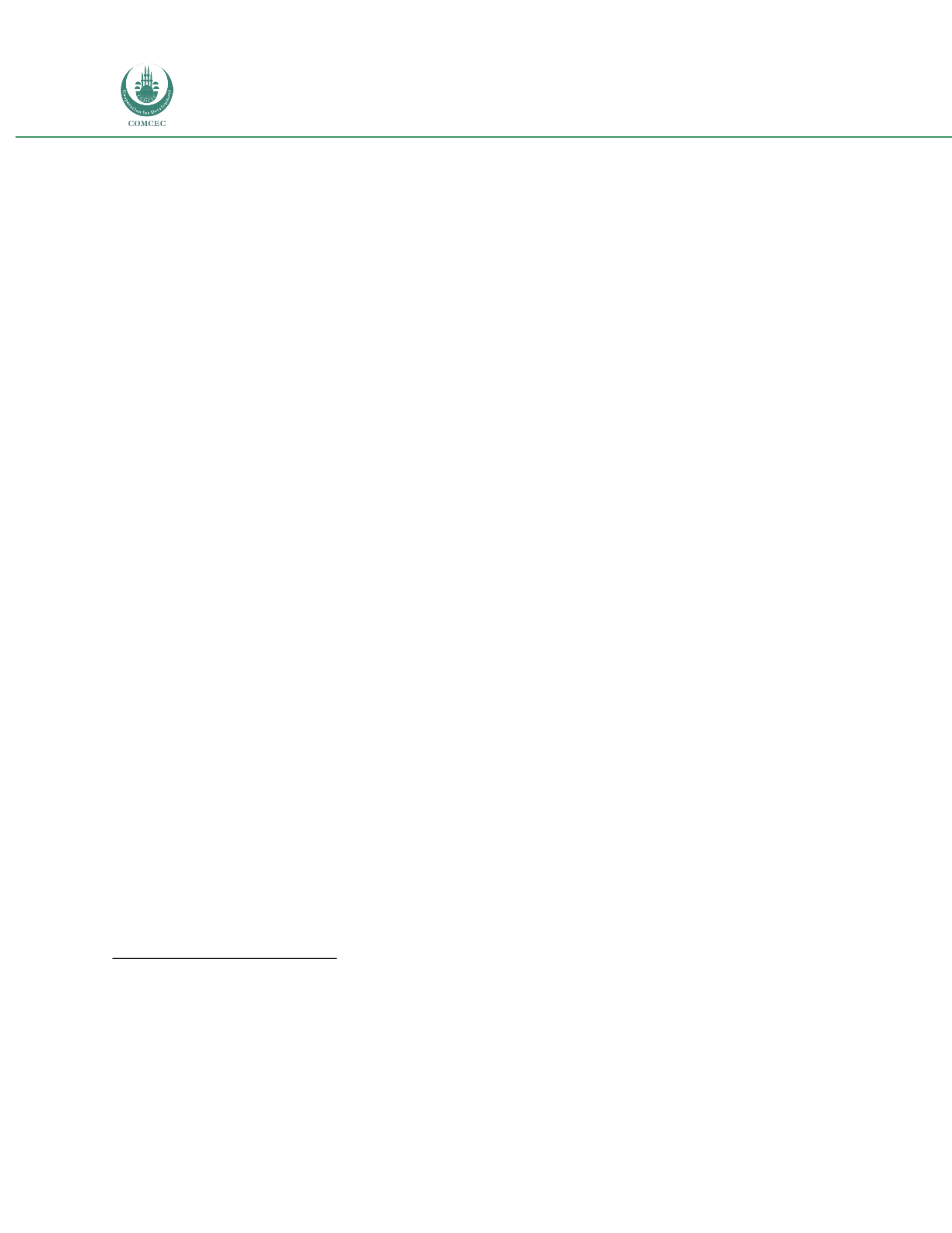

Strengthening the Compliance of the OIC Member States
to International Standards
96
representatives if they wish to gain access the European market. Another problem for Egyptian
exporters is the great variety of quality standards applied across the Arab world and by other trade
partners in Africa and Asia, in addition to strict standards applied by the EU, making exporting to more
than one destination very costly. Exporters are often reluctant to comply to EU standards while there
are other export destinations with less restrictive product quality requirements. Concretely, Egypt
shows a high level of use of international standards in a regulatory sense, but businesses on the ground
are constrained by the need to meet requirements in diverse export markets.
Apart from standard-related trade barriers, a number of procedural obstacles- at home and at the
destination market- have been reported. These can be summarized under complex procedures, large
number of required documents to be issued by several government authorities and lack of coordination
between these authorities, bureaucracy and delays at customs clearance points and lack of facilities at
the ports. Below is a brief description of Egypt’s main exports and a summary of non-tariff measures
affecting trade in these.
Chemicals
Egypt’s main export destinations for chemicals are the European and Arab markets, which account for
nearly 70% of Egypt’s total exports of this category. While exports to Arab countries seems less
restricted, exporters face a number of standard-related difficulties when exporting to the European
market, which are mainly related to lack of compliance with protection of human health and
environment measures. Difficulties reported by top exporters of chemical products
14
highlight the lack
of awareness of certification requirements according to EU standards and difficulties to register in the
REACH
15
process through an intermediate EU agent, especially for exporters from small and medium
enterprises. Measures related to packaging and labeling have been reported as another important trade-
related barrier. At-home border measures are also significant for this sector. For example, exporters
often encounter sudden changes in regulations pertaining to banning exports of certain inputs, increase
or imposition of new tariffs on some final products or intermediate goods at the custom’s clearance
points, which are usually not communicated to exporters in advance.
Textiles
14
Based on communication with the Head of Department for chemical products at the Ministry of Trade and Industry and a report by one
of the leading exporters of chemical products (KAPCI paints Egypt).
15
REACH is a regulation of the European Union, adopted to improve the protection of human health and the environment from the risks
that can be posed by chemicals. It also promotes alternative methods for the hazard assessment of substances in order to reduce the
number of tests on animals. (Source: European Chemicals Agency (ECHA)).
















